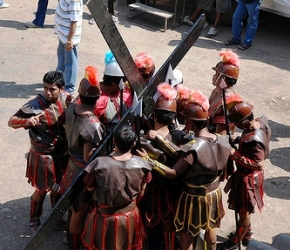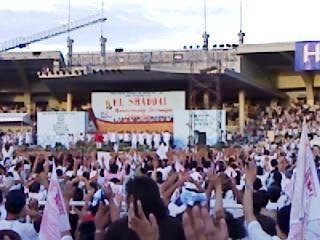Philippines Religion and the introduction of the Spanish
Philippines Religion
Although 85% of the population of the Philippines is Roman Catholic, many other religions are practiced in the country.
There are a substantial number of people who practice Islam and Buddhism in additional to Protestantism.
The Philippine indigenous population practice what we call Animatisms. Regardless of what denomination a Filipino’s faith is, it is undeniable that the spiritual beliefs practiced by the Filipino people play a very important part in their lives.
Philippines religion plays a much more significant role than just a central belief. It is the very thread that binds an entire host of experiences and rituals that provide cohesiveness in the Filipinos’ way of life.
Philippines Religion – Prior to the Spanish
Prior to the Spanish efforts to convert the Filipinos to Roman Catholicism, the majority of the Filipinos, like the indigenous population of Malaysia, were animistic in their faith.
It was common then for Filipinos to pay homage to their ancestors by way of religious offerings. They also believed in spirits, which were responsible for all events, good or bad. So it was not surprising that poor harvests or illness were attributed to these spirits. Such beliefs are reflected in their harvest rites and were central to striking an astral balance between the physical world and the spiritual world.
Philippines Religion – Arrival of the Spanish

All this changed with the arrival of the Spanish clergy who systematically destroyed the belief structures of the indigenous Filipino population.
Simultaneously, the Spanish clergy also left a legacy of syncretism, blending the rituals of Roman Catholicism with that of the belief rituals of the indigenous people. To help the local population understand the central messages of the Bible, the Spanish clergy used vivid and theatrical presentations to drive across the biblical stories to the populace.
This colonial heritage can still be seen when the Filipinos celebrate Holy Week with examples of flagellation and the reenactment of the crucifixion.
Philippines Religion – Today
Today, Christianity in this country is a blending of the Protestant movements and the nationalistic efforts of the Filipinos to
Filipinize Catholicism.
During the American colonial rule, Protestant missionaries attempted to “purify” what they saw was an incorrect syncretic blending of Roman Catholicism in the Philippines. Two such prominent movements that have a strong following today are the
Aglipayans and the
Iglesia ni Kristo sects.
In the more remote parts of the Philippines, a diversity of Christian denominations like the Seventh Day Adventists and Jehovah's Witnesses compete for new followers. This has resulted in a more diversified form of Christianity being practiced in this country today as opposed to what was previously hailed as a pure Roman Catholic country in Asia.

Of late, the fundamentalist Christian sect “El Shaddai”, has also attracted a large number of followers among those Filipinos working aboard, as well as those within the country.
Modeled very much like the charismatic evangelist movements in the US, the El Shaddai sect rely heavily on healing rituals, mass congregations, radio broadcasts and TV appearances to spread their message to those seeking spiritual answers to problems and poverty.
Every week thousand of Filipinos flock to these rallies to listen to what is in essence “Filipino gospel” hoping for redemptions and a better standard of living. It is not surprising to find many come to have their passport blessed by the pastors in order that they can find jobs aboard without any difficulties.
Some even come to get their bank books blessed so that they can save money more easily. Regardless of cultures, religious beliefs thrive for their ability to offer answers or guidance to their followers.
Like the Americans whom had become captivated with TV evangelists, many Filipinos are just looking for answers not only to the hereafter but also a solution to the harsh economic reality that they face everyday.
Return to Philippines Travel Guide Home Page.
Enjoy this page? Please pay it forward. Here's how...
Would you prefer to share this page with others by linking to it?
- Click on the HTML link code below.
- Copy and paste it, adding a note of your own, into your blog, a Web page, forums, a blog comment,
your Facebook account, or anywhere that someone would find this page valuable.
 All this changed with the arrival of the Spanish clergy who systematically destroyed the belief structures of the indigenous Filipino population.
All this changed with the arrival of the Spanish clergy who systematically destroyed the belief structures of the indigenous Filipino population.